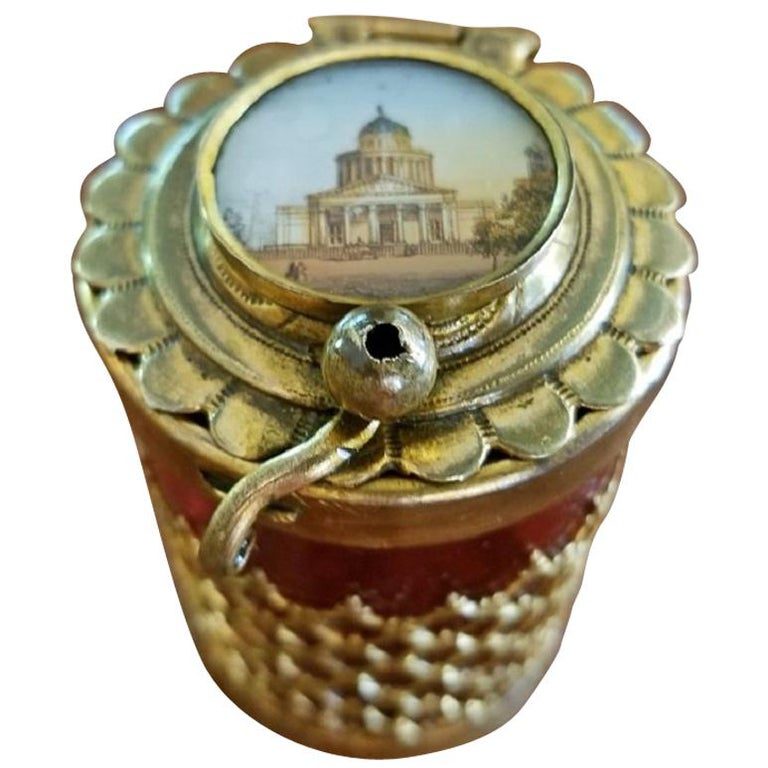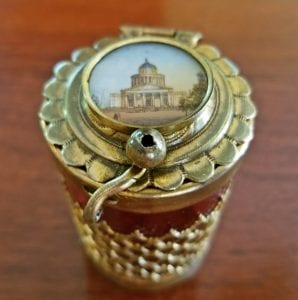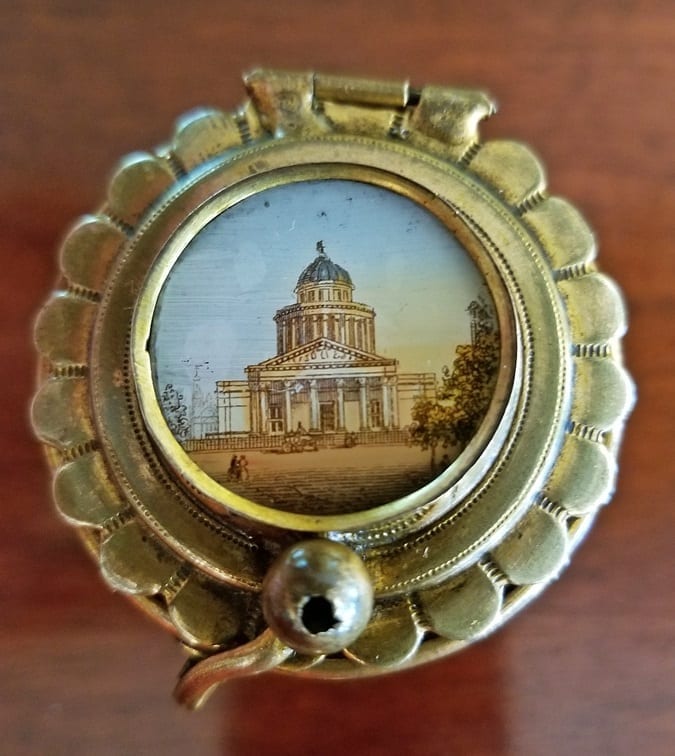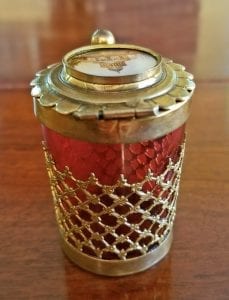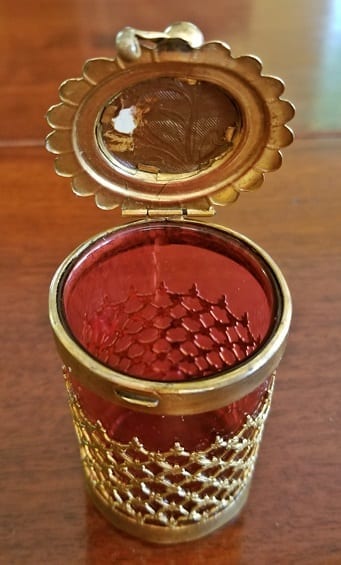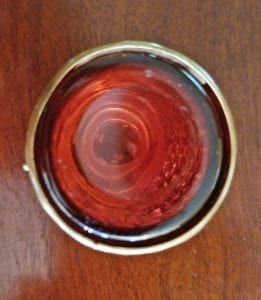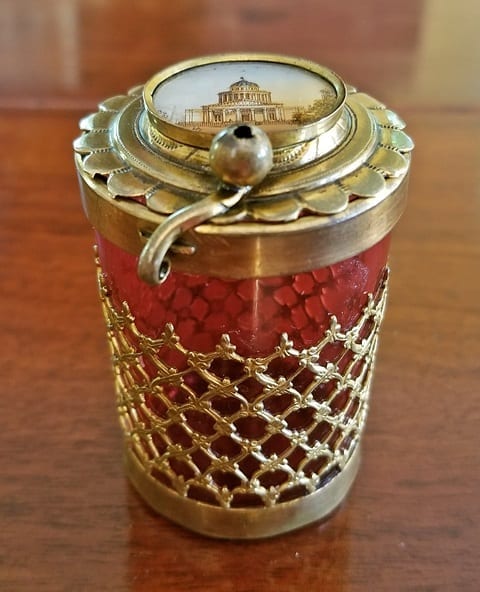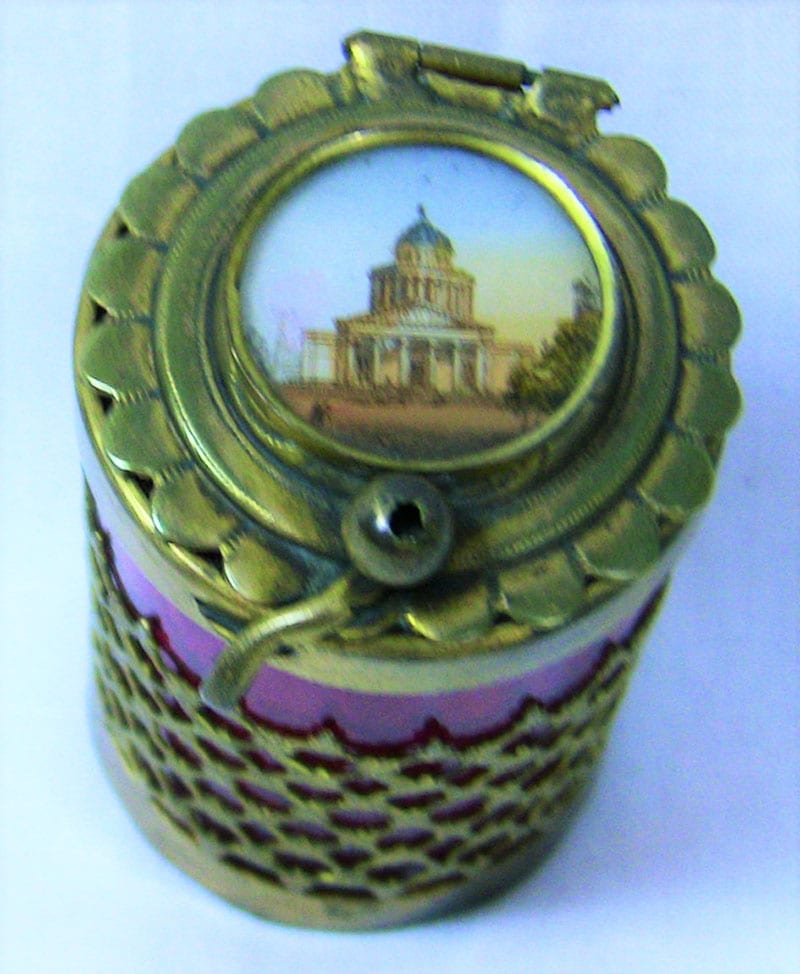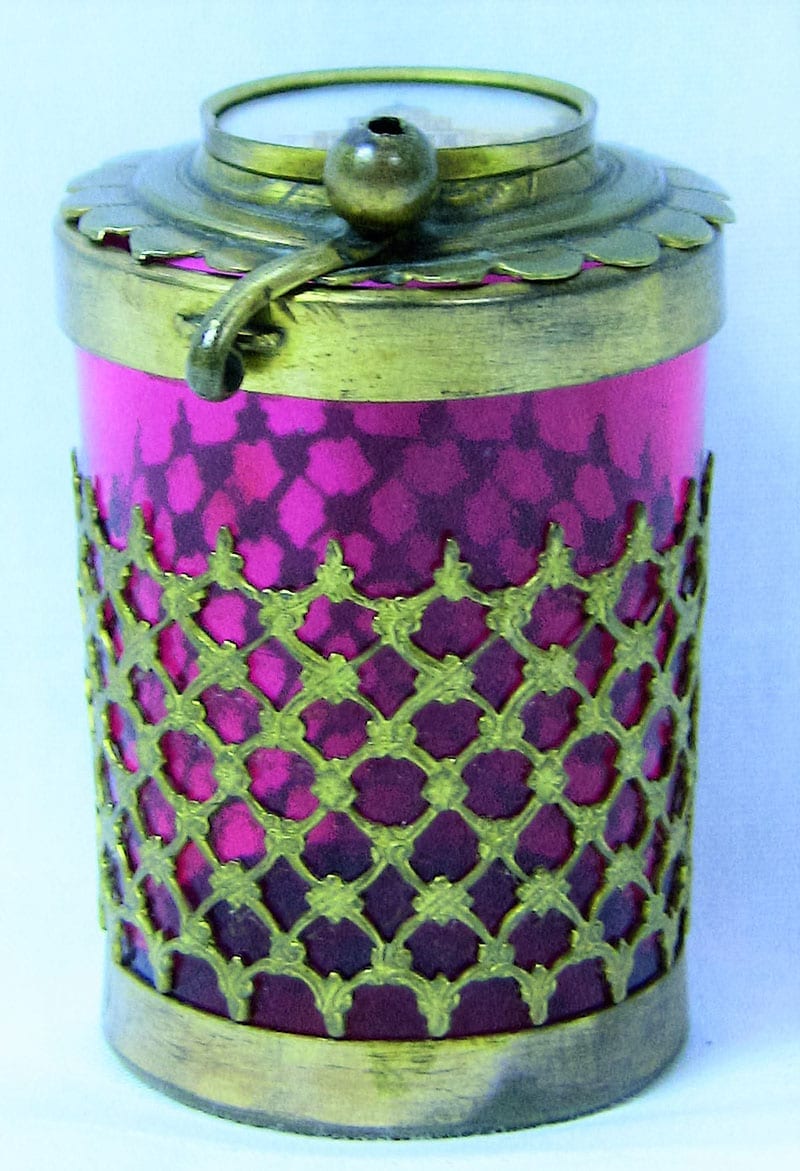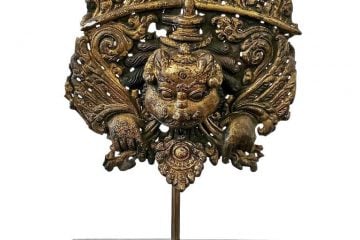PRESENTING A GORGEOUS little Early 19th Century Italian Ring Jar or Pill box made of a thick wine colored ruby glass.
It has a hand-painted miniature painting of a Basilica on enamel, on the top under glass, with gilt metal mounts with beautiful filigree on the sides.
This is most likely an Italian piece and the Basilica probably is St. Peter’s Basilica in Rome.
This box/vessel is from circa 1810-30 and most likely a keepsake from the Grand Tour.
The Papal Basilica of Saint Peter in the Vatican (Italian: Basilica Papale di San Pietro in Vaticano), or simply Saint Peter’s Basilica (Latin: Basilica Sancti Petri), is a church built in the Renaissance style located in Vatican City, the papal enclave that is within the city of Rome, Italy. It was initially planned by Pope Nicholas V and then Pope Julius II to replace the aging Old St. Peter’s Basilica, which was built in the fourth century by Roman emperor Constantine the Great. Construction of the present basilica began on 18 April 1506 and was completed on 18 November 1626.
Designed principally by Donato Bramante, Michelangelo, Carlo Maderno and Gian Lorenzo Bernini, St. Peter’s is the most renowned work of Renaissance architecture and the largest church in the world by interior measure. While it is neither the mother church of the Catholic Church nor the cathedral of the Diocese of Rome (these equivalent titles being held by the Archbasilica of Saint John Lateran in Rome), St. Peter’s is regarded as one of the holiest Catholic shrines. It has been described as “holding a unique position in the Christian world” and as “the greatest of all churches of Christendom.”
Catholic tradition holds that the basilica is the burial site of Saint Peter, chief among Jesus‘s apostles and also the first Bishop of Rome (Pope). Saint Peter’s tomb is supposedly directly below the high altar of the basilica, also known as the Altar of the Confession. For this reason, many popes have been interred at St. Peter’s since the Early Christian period.
St. Peter’s is famous as a place of pilgrimage and for its liturgical functions. The pope presides at a number of liturgies throughout the year both within the basilica or the adjoining St. Peter’s Square; these liturgies draw audiences numbering from 15,000 to over 80,000 people. St. Peter’s has many historical associations, with the Early Christian Church, the Papacy, the Protestant Reformation and Catholic Counter-reformation and numerous artists, especially Michelangelo. As a work of architecture, it is regarded as the greatest building of its age. St. Peter’s is one of the four churches in the world that hold the rank of Major papal basilica, all four of which are in Rome, and is also one of the Seven Pilgrim Churches of Rome. Contrary to popular misconception, it is not a cathedral because it is not the seat of a bishop; the cathedra of the pope as bishop of Rome is at Saint John Lateran.
Link: https://en.wikipedia.org/wiki/St._Peter%27s_Basilica
In the past “Grand Tour” was the name of the journey that the European noblemen and rich bourgeois took to Italy, to discover its ancient beauty and its incomparable richness of arts and culture. It was more than a simple tour or a passing fashion, it became a fundamental moment in the cultural training of every cultivated European.
The Grand Tour was the traditional trip of Europe undertaken by mainly upper-class European young men of means. The custom flourished from about 1660 until the advent of large-scale rail transport in the 1840s, and was associated with a standard itinerary. It served as an educational rite of passage.
Link: https://en.wikipedia.org/wiki/Grand_Tour
This would have been a keepsake from ‘The Grand Tour’ and the tourists visit to the Vatican City.
19C Italian Ruby Glass Box with Miniature of Basilica.
Provenance: Bought at a High-end Auction in Ireland.
Dimensions: 2.5 inches Tall with a 1.7 inch diameter
Condition: In great condition for its age.
